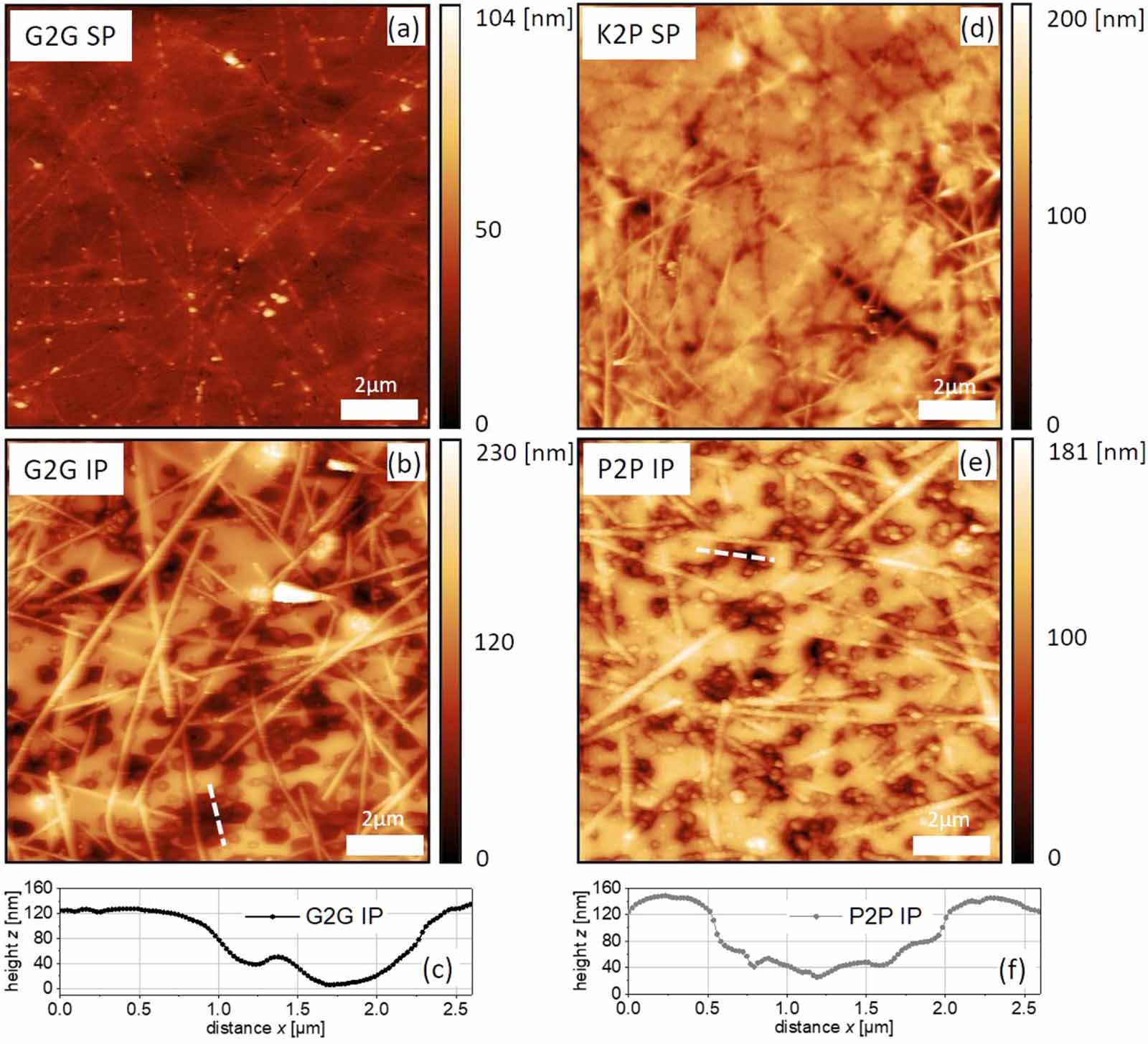In the article “Gentle plasma process for embedded silver-nanowire flexible transparent electrodes on temperature-sensitive polymer substrates “ Lukas Kinner, Emil J W List-Kratochvil and Theodoros Dimopoulos investigate processing routes to obtain highly conductive and transparent electrodes of silver nanowires (AgNWs) on flexible polyethylene terephthalate (PET) substrate.*
Their study shows that both thermally stable polyimide, as well as temperature-sensitive PET can be used as flexible host substrates, combined with a gentle, AgNW plasma curing. This is possible by adjusting the fabrication sequence to accommodate the plasma curing step, depending on the host substrate. As a result, embedded AgNW electrodes, transferred from polyimide-to-PET and from PET-to-PET are obtained, with optical transmittance of ~80% (including the substrate) and sheet resistance of ~13 Ω/sq., similar to electrodes transferred from glass-to-glass substrates.*
The embedded AgNW electrodes on PET show superior performance in bending tests, as compared to indium-tin-oxide electrodes and can be easily combined with metal oxide films for device implementation. The introduced approach, involving low-cost flexible substrates, AgNW spray-coating and plasma curing, is compatible with high-throughput, roll-to-roll processing.*
The impact of the introduced processes concerns therefore applications where high-throughput production must be combined with sensitive, flexible substrates and ultra-thin device architectures, like OLEDs and organic- or perovskite-based photovoltaics.*
The sample surfaces were characterized with atomic force microscopy (AFM) in tapping mode, using high-resolution NANOSENSORS™ SuperSharpSilicon™ SSS-NCHR AFM probes.

AFM images of the AgNW electrodes for: (a) G2G SP, (b) G2G IP, (c) height profile for the dashed line marked in (b), (d) K2P SP, (e) P2P IP, (f) height profile for the dashed line marked in (e).
*Lukas Kinner, Emil J W List-Kratochvil and Theodoros Dimopoulos
Gentle plasma process for embedded silver-nanowire flexible transparent electrodes on temperature-sensitive polymer substrates
Nanotechnology, Volume 31, Number 36 (2020)
DOI: https://doi.org/10.1088/1361-6528/ab97aa
Please follow this external link to read the full article: https://iopscience.iop.org/article/10.1088/1361-6528/ab97aa
Open Access: The article “Gentle plasma process for embedded silver-nanowire flexible transparent electrodes on temperature-sensitive polymer substrates” by Lukas Kinner, Emil J W List-Kratochvil and Theodoros Dimopoulos is licensed under a Creative Commons Attribution 4.0 International License, which permits use, sharing, adaptation, distribution and reproduction in any medium or format, as long as you give appropriate credit to the original author(s) and the source, provide a link to the Creative Commons license, and indicate if changes were made. The images or other third party material in this article are included in the article’s Creative Commons license, unless indicated otherwise in a credit line to the material. If material is not included in the article’s Creative Commons license and your intended use is not permitted by statutory regulation or exceeds the permitted use, you will need to obtain permission directly from the copyright holder. To view a copy of this license, visit http://creativecommons.org/licenses/by/4.0/.